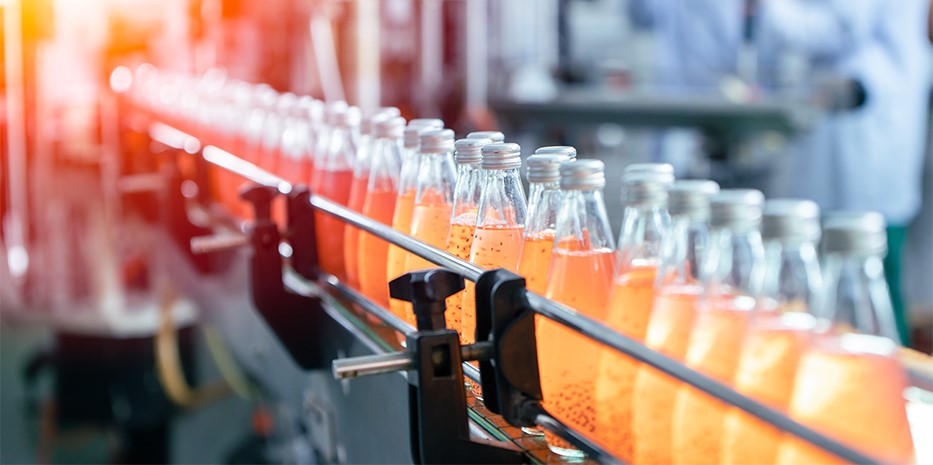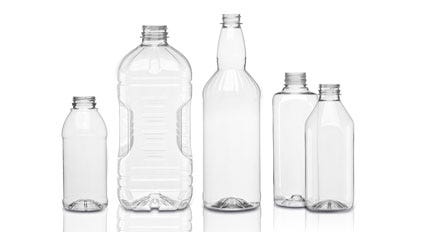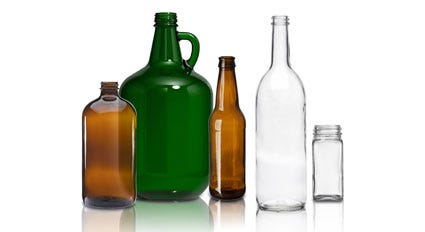Understanding hot fill and how it impacts your packaging
The food and beverage industry deploys a range of packaging methods to preserve, protect and extend the shelf life of consumable products. One of the most popular techniques to sterilize your juice, sauce or spread is hot fill packaging.
But what is hot fill and are all bottles compatible with this process? With a multitude of bottle types, shapes, sizes and materials to consider, discover the best hot fill packaging for your application!

What is hot fill?
Hot fill is a packaging method that uses heat to sterilize strongly acidic liquid foods and beverages to extend their shelf life at non-refrigerated conditions without the use of preservatives. This helps prevent the reproduction of harmful microorganisms that would cause the product to spoil.
Why do manufacturers use hot fill?
For thermal processed foods or beverages to meet the FDA’s manufacturing requirements, a product must be considered commercially sterile: the result of disinfecting both the product and bottle of microorganisms capable of growing in non-refrigerated environments.
Hot fill is an efficient way to sterilize both the product and the container in minimal time. Hot fill packaging can improve the freshness and taste of the product in comparison to methods that use additives and chemicals. An efficient hot fill method could increase the shelf life of a product from 6 to 12 months.
Hot fill packaging applications
Hot fill is not for alcoholic or carbonated liquids. Instead, hot fill is best suited for highly acidic beverages and foods with a pH level of 4.6 or greater such as:
Beverages
- Apple, orange, grape, dilutable juices
- Nectars
- Sport drinks
- Flavored waters
- Ready-to-drink iced teas
- Vegetable and mixed vegetable drinks
Liquid foods
- Marinades
- Sauces
- Salsa
- Soups
- Spreads
- Vinegar and vinegar-based sauces
Hot fill bottling process
Hot fill packaging involves six essential steps to extend shelf life without the use of preservatives. While these measures are a general way hot fill is used, it is important to note that every liquid product has its own unique properties and will need to be treated exclusively. Determining your process will impact your product’s texture, taste, color, nutrients and minerals. We recommend speaking with an expert to accommodate to your product’s specific needs.
- The liquid is heated anywhere from 180° to 203° F (82° to 95° C) depending on the product’s antiseptic requirements. This will ensure all the bacteria is eliminated to create a commercially sterile product. The temperature is maintained in a heat exchanger for 15 to 30 seconds.
- The liquid then rests until the temperature lowers to about 180° to 185° F (82° to 85° C).
- Once the temperature decreases, the liquid is filled in the bottle and immediately capped for closure. In this step, the inner surface of the container becomes sterile from the hot liquid. In some cases, nitrogen is added to the headspace (the unfilled space between the substance and the rim) to remove oxygen to prevent oxidation.
- To ensure the closure is also sterilized by the hot liquid, the container is either tilted or inverted for 7 to 30 seconds. For larger containers, 2 to 3 minutes.
- The hot fill bottle is ready to be chilled at the cooling station by shower, water bath or air tunnel. This stage helps preserve the product’s taste and nutritional properties. Because of the rapid cooling, a vacuum is created inside the container which prevents microbial growth.
- The chilled bottle is dried and ready for labeling.
Questions to consider when selecting a hot fill bottle
There are many factors that could influence the product’s sensitivity to spoilage by harmful microorganisms, so establishing which bottle to use for your hot fill packaging is crucial. Here are questions to consider:
- What type of bottle will you be using?
- What size is your container?
- What is its wall thickness?
- What type of caps will you be using?
- Will you be using cap accessories (shrink bands, liners)?
Knowing the answers to these questions will help establish the temperature, length of time the container should be exposed to the heat, and water activity to ensure the product will not develop harmful microorganisms during its shelf life.
Bottle options for hot fill packaging
It is important to determine which container is compatible with hot fill. Hot fill packaging is applicable to certain plastics, glass as well as heat resistant cans. So, which bottle type is right for you?

Hot fill plastic bottles
Plastic is a great material to choose for hot fill packaging because it is lightweight and highly impact resistant. However, not every bottle is suitable for this process. Some plastics cannot withstand high temperatures and it is important to identify which plastic bottles are appropriate for your packaging.
For some plastic bottles to be suitable for hot fill packaging, they must first undergo a process called heat-set to withstand the higher temperatures of the hot fill process.
Common plastic types for hot fill
Polypropylene (PP) is a type of plastic that can naturally withstand high temperatures without the need of heat treatment, making it a great option for hot fill packaging. This plastic can typically be used with temperatures up to 165° F (73.9° C). The consistency of polypropylene is flexible yet durable; PP is translucent in its natural state but can have a glossy finish when produced with color.
Polyethylene terephthalate (PET) is the most popular plastic for hot fill because of its clear and non-streaky finish. However, unlike PP, this plastic cannot naturally maintain its form when exposed to high heat. PET bottles must be treated with the heat-set process so they can endure higher temperatures without collapsing. Depending on the type of heat treatment used, this plastic can in some cases tolerate temperatures up to 185° F (85° C) while maintaining clarity and shape.

Hot fill glass bottles
Glass has many benefits when it comes to hot fill. Hot fill glass bottles do not require any additional processes when they are heated and can hold extremely high temperatures without warping or affecting the product inside. While glass is durable, it is heavier in comparison to plastic. You may need to consider the cost of shipping when opting for glass.
What are the benefits of hot fill packaging?
- Protects and extends product shelf life
- Disinfects both the bottle and product
- Does not use preservatives or artificial enhancements compared to alternative preservation methods
- Helps maintain the product’s desired taste, consistency and nutritional qualities
What are the disadvantages of hot fill packaging?
- Requires constant monitoring of both bottle and product temperature. A recirculation system is needed to control and manage hot fill manufacturing.
- Temperature and heating times must be properly balanced or the product’s quality (in terms of vitamin, taste, color and texture) will degrade.
- Specific and custom packaging must be compatible with the hot fill process.
How can I find hot fill bottles?
Already know your hot fill process? Wonderful! Now it’s time to find the right container for your hot fill packaging.
If you wish to explore different compatible bottle options for hot fill packaging, look no further! Contact us today to talk about your packaging needs or if you have more questions about hot fill packaging. We can help you find the best product to fit your requirements! Or browse our selection:



